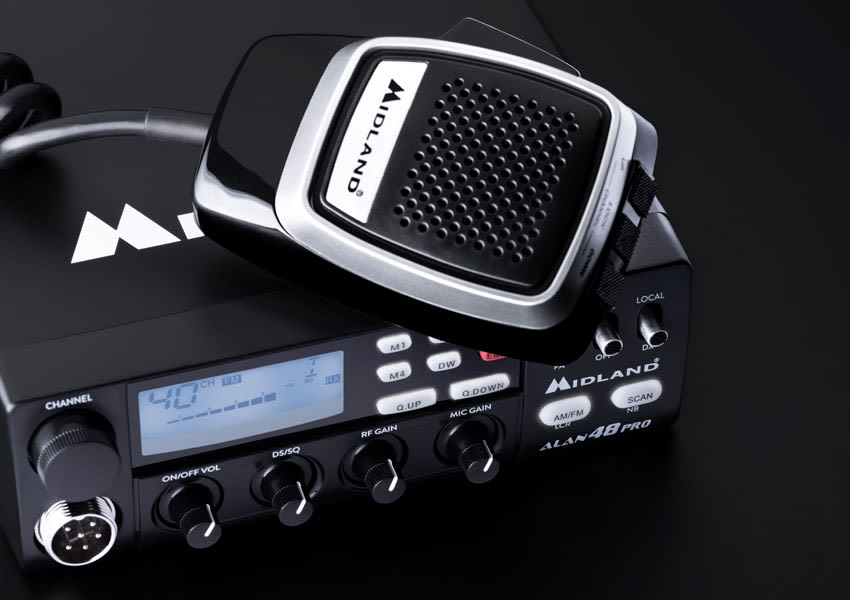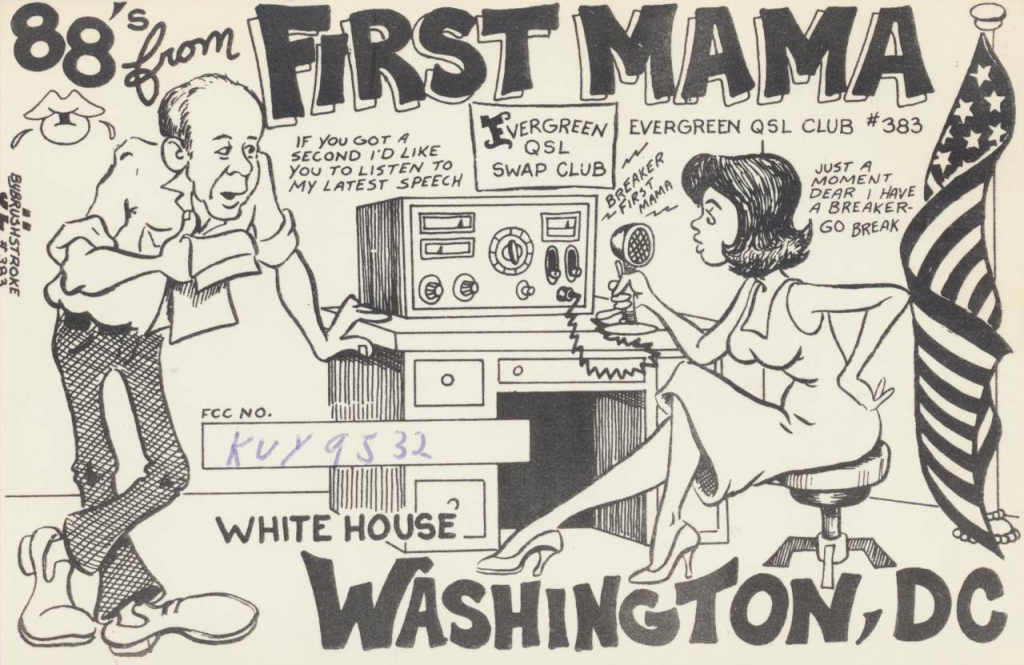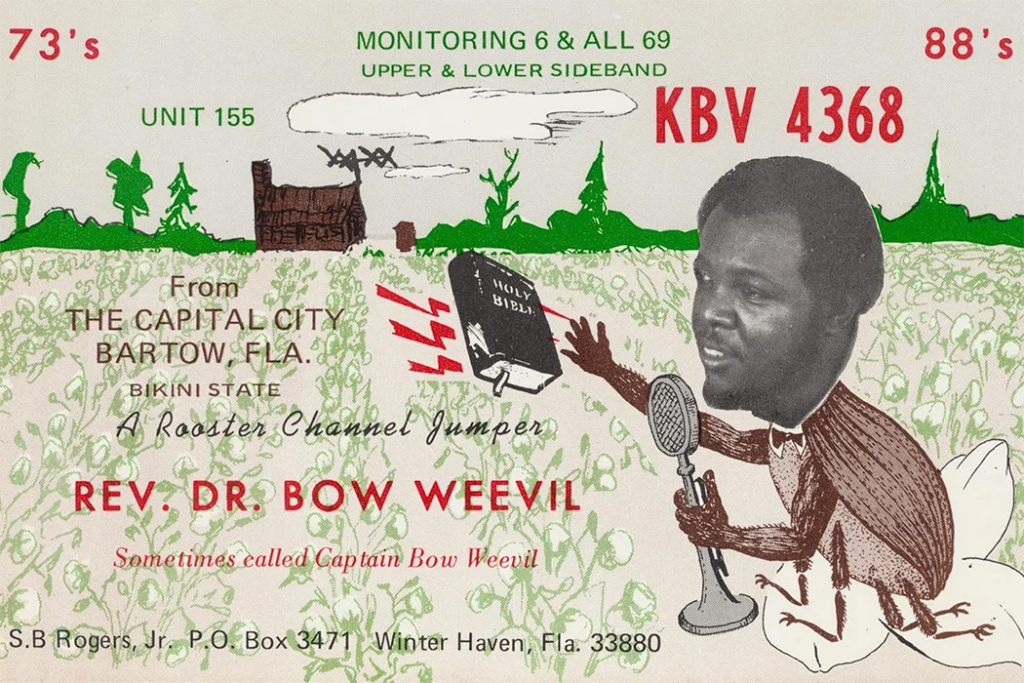
The purpose of this weblog post is to provide some insights into how citizen’s band radio, and its descendants, have changed in this millennium.
Personal Radio Services
A Personal Radio Service (PRS) is any system that allows individual to operate radio transmitters and receivers for personal purposes with minimal or no special license or individual authorization. These services exist around the world where power output, antenna size, and technical characteristics of the equipment are set by regulations in each country. However, most are very similar. They offer low power operation in the UHF (or upper VHF) band using frequency modulation (FM), with simplified or no end-user licenses.
Technical information
In terms of PRS, the new millennium began in 1987 when USA’s Citizen’s band Class A became the General Mobile Radio Service (GMRS). Because of channel congestion in larger metropolitan areas licensing of business users was discontinued, and Business Radio Service (BRS) channels developed. Citizen’s band Class B ultimately became the Family Radio Service (FRS).
In 2019-09, it became unlawful in the USA to provide hybrid radio equipment capable of operating under both GMRS and FRS. They had to be separate radios.
GMRS
In the USA, a person may apply for a GMRS license if they are 18 years or older and not a representative of a foreign government. If they receive a license, any family member, regardless of age, can operate GMRS stations and units within the licensed system.
Personal Radio Service is any system that allows individual to operate radio transmitters and receivers for personal purposes with minimal or no special license or individual authorization. These services exist around the world where power output, antenna size, and technical characteristics of the equipment are set by regulations in each country. Many regions, such as the European Union, have standardized regulations to allow travelers to use their equipment throughout the region.
Examples of standardized services include PMR446 and FM Citizens Band Radio (CB) in the EU and several other countries/regions.
GMRS and FRS both use narrow-band frequency modulation (NBFM) with a maximum deviation of 2.5 kilohertz. The channels are spaced at 12.5 kilohertz intervals. There are 30 channels, 16 main and 14 interstitial (read: inferior channels located between the main channels) divided equally around 462 and 467 MHz in the ultra high frequency (UHF) band. The eight main 462 MHz channels can be used for simplex communication (read: a communications channel that operates in one direction at a time, but that may be reversible) or repeater outputs. A repeater is an electronic device that receives a signal and then immediately re-transmits it. Repeaters are used to extend transmissions so that the signal can cover longer distances or be received on the other side of an obstruction. The eight main 467 MHz channels may only be used as repeater inputs, with 462 MHz channels as outputs. As with other UHF radio services, reliable range is considered to be line-of-sight and the distance to the radio horizon can be estimated based on antenna height. A hand-held units is about 1.5 – 3 km. Mobile units have higher antennas and a longer range (around 8 km). A repeater can extend the range to 30 km. Obstructions usually reduce range. Increased power may not give a proportional increase in range, but improve reliability at the edge.
Transmitter power output is restricted to 50 W, on the 16 main channels, but 1 to 5 W is more common. The 462 MHz interstitial frequencies have a 5 W power limit. The 467 MHz interstitial frequencies have a 500 mW limit. Only hand-held portable units may transmit on these channels.
Canadian residents may use GMRS equipment, but do not need a license. Mobile units permanently mounted in vehicles, base stations and repeaters are not currently permitted on the GMRS channels in Canada.
In 2017, The FCC changed GMRS rules to allow short data messaging applications including text messaging and GPS location information, added channels in the 467 MHz band, revised the definition of the FRS service and permitted 2 W on the shared FRS/GMRS channels.
Family Radio Service
The Family Radio Service (FRS) was first proposed by RadioShack in 1994. It was authorized in the United States in 1996. It uses the same channels as GMRS. One reason for this, was that these channels do not suffer from interference found on citizens’ band (CB) at 27 MHz. FRS uses frequency modulation (FM) instead of amplitude modulation (AM). Initially, the FRS radios were limited to 500 mW across all channels. However, after 2017-05-18, the limit was increased to 2 W on channels 1-7 and 15–22.
FRS radios frequently have sub-audible tone squelch codes to filter out unwanted chatter/ noise from other users on the same frequency. Continuous Tone-Coded Squelch System (CTCSS) adding a low frequency audio tone to the voice. Where more than one group of users is on the same radio frequency (called co-channel users), CTCSS circuitry mutes those users who are using a different CTCSS tone or no CTCSS. Digital-Coded Squelch (DCS), was designed as the digital replacement for CTCSS. While these are often referred to as privacy or private line (PL) codes, they offer no privacy protection. All FRS equipment must be certified according to FCC regulations. This includes the use of permanently attached antennas. This restricts range, allowing optimal use of the available channels. The use of duplex radio repeaters and telephone network interconnects are also prohibited.
FRS range varies, but is less than that using GMRS radios, normally from about 0.5 to 1.5 km.
All 22 Family Radio Service (FRS) frequencies are shared with GMRS, and users of the two services may communicate with each other. With the exception of FRS channels 8 through 14, GMRS licensees may use higher power radios with detachable or external antennas.
PMR446
In 1997-04 the European Radio Communications Committee (ERC) decided on a 446 MHz frequency band for Private Mobile Radio, 446 MHz (PMR446), a license-exempt service in the UHF radio frequency band available for business and personal use throughout the European Economic Area and beyond.
In 1998-11, ERC allocated frequency band 446.0–446.1 MHz for analogue PMR446, established licence exemption and free circulation of the PMR446 equipment. In addition to analogue FM voice mode a digital voice mode is available with digital private mobile radio (dPMR446) and digital mobile radio (DMR Tier 1) standards designed by the European Telecommunications Standards Institute (ETSI). Originally 8 analogue channels were available.
In 2005-10, ECC added unlicensed band 446.1–446.2 MHz for use by digital DMR/dPMR equipment. In 2015-07, ECC doubled the number of analog channels to 16 by extending analog operation onto the 446.1–446.2 MHz band previously used by digital DMR/dPMR equipment. From 2018-01, the number of digital channels was doubled by extending onto the 446.0–446.1 MHz band used by analog FM.
PMR446 specifies 12.5 kHz channel separation, 500 mW maximum power, CTCSS, DCS and/or fixed-carrier voice inversion = an analog method of obscuring the content of a transmission, use of handheld transceivers with fixed antennas, but with some exceptions in Germany and the Netherlands, In response to this exception, from 2015-11 Midland Radio has been producing the GB1 mobile PMR446 radio for vehicular use.
There is no provision for use of repeaters on the European network.
FM Citizens Band Radio
The European Conference of Postal and Telecommunications Administrations (CEPT) adopted the FM 26–27 MHz North American channel assignments, except channels 23 to 25. CB equipment sold legally in Europe follows the North American channel designations. Some member countries permit additional modes and frequencies.
While CB radio is less popular due to the availability of other personal radio services that offer shorter antennas and better protection from noise and interference, it is the oldest and, arguably, most common personal radio service. It is used in nearly every country worldwide, who also copy the United States 40-channel frequency plan.
Overconsumption
This post, and two prior posts = Dick Tracy wristware & CB Radio: 20th century, have been written to find convincing arguments to support the acquisition of a CB radio. For the past several years, and especially after the acquisition of Buzz on 2023-02-13, I have wanted to return to those controversial years of my youth in the late 1960s and 1970s. In terms of economics, I could probably convince myself that such a radio is affordable. The mathematical equation is: 1 Midland Alan 48 Pro CB radio = 1/4 Asus Zenfone 9 (my smartphone). The main challenge is psychological. Why do I have an obsession for outdated, prehistoric tech? I can ask the same question about Drake.
Drake was my preferred brand of amateur radio equipment. It started manufacturing tube transceivers in 1943 in Springboro, Ohio. I prefer modern solid state units, with transistors and digital frequency synthesis, as found in the TR-7, first made in 1978! After that, Drake was just rebadged Japanese equipment. Currently, any attempt to reach Drake digitally results in a a redirection to Blonder Tongue Laboratories, in Old Shore, New Jersey. Should I ever do anything serious, I think I will follow my son’s example and acquire a transceiver from Elecraft founded in 1998 in Watsonville, California, a place I have even visited!
Seconds after writing the previous paragraph, on 2024-04-15, an email from the Norwegian world wide fund for nature tells me in translation: Today is Norway’s Overshot = Overconsumption Day. It is the day when we, as one of the first countries in the world, have used up our share of the earth’s renewable natural resources for 2024. This is shown by the calculations from the international think tank Global Footprint Network, which every year calculates a date for the so-called Overshot day. Norway is at the very top of the world when it comes to consumption of natural resources. Our overshot day comes a full 16 weeks before the global average. So, choose carefully what you buy, Brock! Maybe you don’t need a CB radio!
Except, a day later I investigated the WWF claims and discovered that the opposite is true. Norway’s biocapacity exceeds its ecological footprint by 29%. This makes it 46th best in the world. Not as good as: Russia (45) at 30% or Sweden (34) at 58% or Canada (27) at 84% or Australia (24) at 87% or Finland (21) at 129% or French Guiana (1) at 4 900%. However, it is better than: Ireland (92) at -49%, World average -70%, Denmark (102) at -71%, USA (130) at -110%, UK (170) at -140%, Israel (202) at -1 600%, Singapore (205) at -6 100%, or Nauru (206 and last) at – 46 000%.
A lot of people wonder how mega fossil fuel producers like Norway or Russia or Canada or Australia can be ranked so high. That portion of fossil energy that is exported, gets added on to consumption values of the importing country, and subtracted from the producing country.
I then calculated Norway’s under-consumption day for 2023. It should be 2024-04-15 (or on that same date, in leap years) or on 04-16 a year later, in other years that have only 28 days in February.
This does not mean that consumption by Norwegians is acceptable. In a previous post title Immoral Consumption, written in 2018, I presented a table showing five countries with data about them:
| Eco footprint | Biocapacity | Deficit (-) / reserve (+) | |
| USA | 8.22 | 3.76 | – 4.46 |
| Canada | 8.17 | 16.01 | + 7.83 |
| Ireland | 5.57 | 3.73 | – 1.83 |
| Norway | 4.98 | 8.18 | + 3.19 |
| Cuba | 1.95 | 0.76 | – 1.19 |
These used the global hectare (gha) as a measurement unit for the ecological footprint of people or activities and the biocapacity of the Earth or its regions. One global hectare is the world’s annual amount of biological production for human use and human waste assimilation, per hectare of biologically productive land and fisheries.
It measures production and consumption of different products. It starts with the total biological production and waste assimilation in the world. Global hectares per person refers to the amount of production and waste assimilation per person on the planet. In 2012 there were approximately 12.2 billion global hectares of production and waste assimilation, averaging 1.7 global hectares per person.
Yet, consumption was 20.1 billion global hectares or 2.8 global hectares per person. This means there was a 65% over-consumption, because of natural reserves that backup food, material and energy supplies, although this is possible only for a relatively short period of time. Due to rapid population growth, these reserves are being depleted at an ever increasing tempo. The term global hectare (gha) was introduced in the early 2000s based on a similar concept from the 1970s named ghost acreage.
Having concluded that my lifestyle is excessive, in terms of the planet’s capacity, I returned to the question of buying a CB radio. I wondered if it would be ecologically more acceptable to 1) buy one used, or 2) make one? Buying used would not create more waste, but redistribute what has already been created. Making one could be ecologically acceptable, especially if it were built from recycled components. Unfortunately, a self-made radio would also occupy a considerably larger volume/ space.
I have many radios suitable for amateur/ ham purposes, but no CB radios. These include a Tennessee Technology = Ten-Tec = TT 505 Argonaut low power (QRP) transceiver, s/n 388. It is solid state from 1973, operating on the 10 – 80 meter bands with 2 watts output on 80-15 meters and 1.8 watts on 10 meter. I inherited it from a silent key = deceased member, of the Inntrøndelag radio group. I will keep it. However, I have many other radios that I want to give away to people who want to use them. The bar is set at them earning an amateur radio licence. That said, anyone with a CB radio wanting to trade it for an amateur radio of varying capabilities is invited to take contact.



